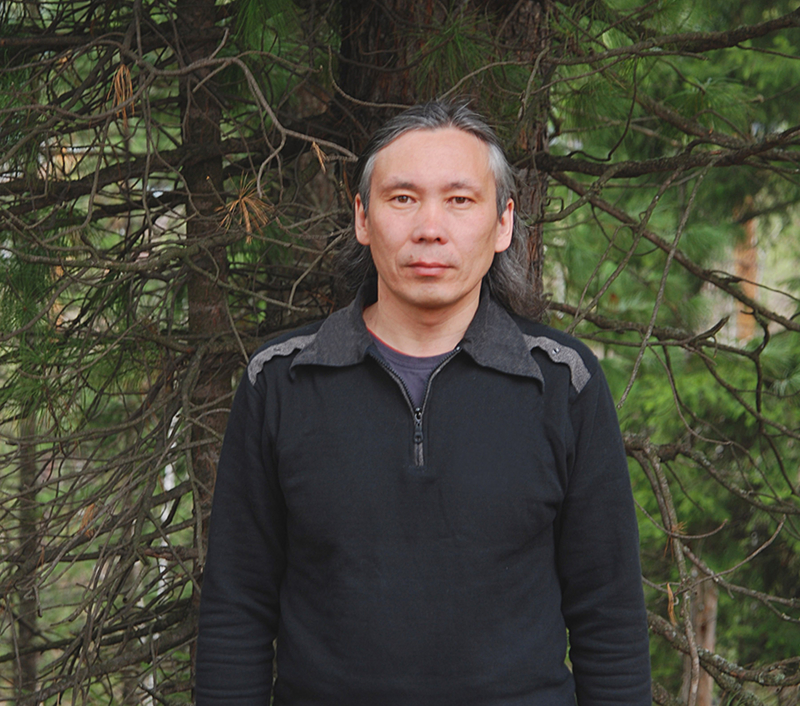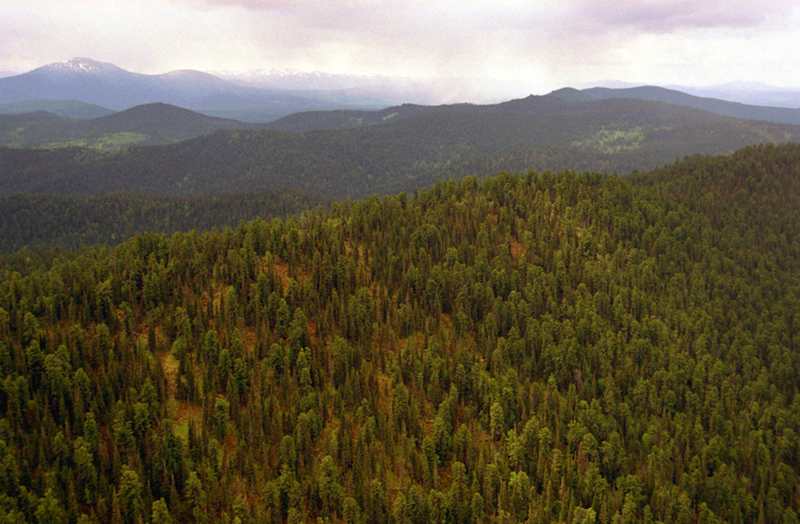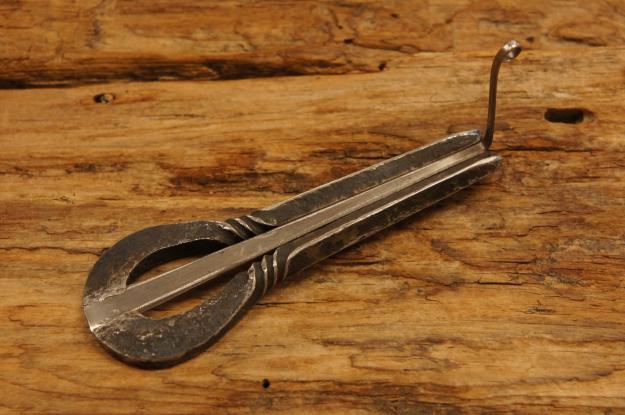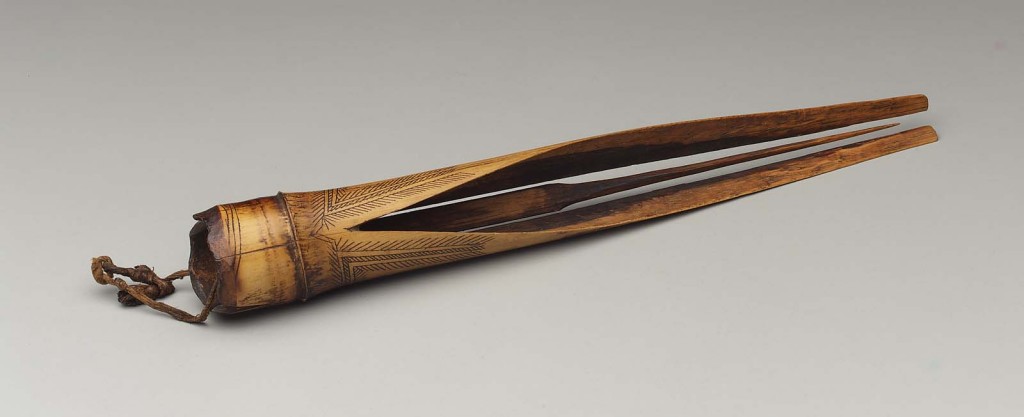A Conversation with Alexander Arbachakov

It was on a warm, early summer evening in Portland, Oregon where I sat down with Alexander Arbachakov. Gathered at a barbecue, surrounded by Northwest environmental leaders and five delegates of Russian conservation groups, we discussed shamans, natural sound, and the spirit world.
Mr. Arbachakov is a member of the Shor tribe of Kemerovo Oblast, Southern Siberia. He founded The Taiga Research and Protection Agency to defend the cedar forests where his people live. In 2006, he won the Whitley Environmental Award for his efforts to preserve the taiga and the natural heritage of his culture. Mr. Arbachokov is a calm, contemplative man of 51; congenial, yet enigmatic, cosmopolitan, yet spiritual in a way I intuited as deeply traditional.

JR: I am interested in the connections between American indigenous music and the environment, and indigenous music of the Russian Far East, their connection to nature, and most especially shamans.
AA: I remember watching the TV, and there was a documentary on the people of South America and my mother heard a song (on the TV) and recognized it. She said “I know this song, and began to sing her version”; of course it wasn’t exactly the same, but still the same song, the same motif, and sung the same way…
JR: Do you remember where in South America?
AA: I think it was Peru.
JR: How are the kam’s (shaman) drum and songs related to nature?
AA: Depends on the ceremony, depends on the shaman, every shaman has a special style and everybody has a great condition/obligation for each ceremony; but there are motifs (which can be transferred from shaman to shaman). Shaman often mimic the sounds of nature. My wife, Luba, she is a folklorist and she knows more than I. We met and documented some of the last, oldest shamans. The last one, unfortunately, died in 2008.
But there is a young woman, she is 19 and she has visions and dreams and is able to write while in trance. She communicates with spirits. She has begun her own ceremonies. We are hoping she will continue and become a shaman.
My mother also used to sing shaman songs.
JR: Is your mother a shaman?
AA: No, no.
JR: But she knew their songs?
AA: Yes, some…
JR: I’m referring now to the young woman, were her songs used to communicate with spirits? Nature spirits?
AA: Yes, and she is conversing with shamans from the past. She also received a message from my father, who is deceased.*
When she hears spirits she begins to write. She connects with elders.
JR: What does she do in her ceremonies?
AA: First she builds a fire, and then she feeds the soul of the fire, the ‘spirit fire.’ She can give bread or other produce/food…
JR: Alcohol?
AA: Hmm…sometimes, and just a little…and the ceremonies could be for healing or finding something that is lost, like a cow (laughs), connecting with the spirit of the animal or others to help locate it.
JR: Finding something that is lost? Like a soul?
AA: (Smiles) Yes, that too.
JR: Do some Kam mimic animal sounds to evoke their spirit?
AA: Yes, sometimes.
JR: Is sound used to evoke and communicate with spirits?
AA: Yes! Sounds of nature. It makes no difference where. The same spirits hear.
(At this point he politely rushes off and brings back a mouth harp. It is essentially a small jaw harp with a thin steel tongue and two small thin carved wood handles. He asked if I knew what it was and if I could play it. I told him I did and proceeded to play the most measly little twangs. But he could tell I understood how it made sound and why it might be important. He said I wasn’t bad and admitted: “I can’t get all the harmonics, the higher melodies either.”)

(Taking the mouth harp back from me.)
AA: Aww, yes. An indigenous Malaysian gave me one (mouth harp) very similar, but made from bamboo—they are not as strong and often break and rot. But it was the same instrument for generally the same use.

JR: Back to nature sounds. How does the shaman hear nature sounds?
AA: The shaman does not just hear single voices, the twittering of birds and wind– but all of them together as one voice.
JR: The Soundscape.
AA: Yes! These ideas (in the soundscape) were there even before people were thinking about them or speaking.
I think if a shaman, if an (American) Indian heard these sounds of Kemerovo (Kemerovo Oblast in Southwestern Siberia), they will understand.
*(NB: Communicating with ancestors and prior shaman’s spirits is a near ubiquitous skill and initiation in shaman traditions known around the planet. Also, Mr. Arbachakov speaks, writes, and understands English very well, yet for fluidity of the conversation he occasionally spoke Russian. Translation was assisted by Anne Polyakov, translator and liaison for the Coal Exchange Russian delegation, hosted by NGO, Pacific Environment. The conversation was slightly edited for this post.)
